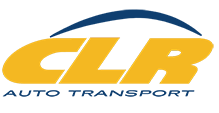Reflections on 2020, How The Pandemic Changed Our Industry & What We've Learned
As the light at the end of the 2020 tunnel approaches, we cannot help but look back at the lessons we’ve learned through the tumultuous year that affected the transportation industry like no other year in our lifetime.
It was late January when we first began hearing expanded news about a new virus sweeping across Eastern Asia. Like too many times before, most of us saw this as a problem “somewhere else in the world” and not ours. As we now know, that was a huge mistake.
In early February, I found myself accompanying a team of drivers that were delivering vehicles all across Southern and Central California plus Arizona. As it turned out, the San Francisco area was one of the U.S.’s earliest virus hot-spots. Our drop-offs were going to Fremont, CA…a suburb of San Francisco. We began experiencing the first wave of grocery and cleaning supply hoarding when we returned to Southern California in mid-February. Suddenly, this was something real and serious.
Shifting my task from driver chaser to license and titling agent, I experienced a completely new obstacle. Department of Motor Vehicle offices were limiting in-office visitors and closing branches across the state. A two to three week delay in getting hard plates was announced almost immediately. With nearly 70 vehicles to deliver and plate in California, we were entering new and unchartered waters.
It was nearly two more weeks before our company was deemed essential, as part of a broader transportation initiative. The vehicles we delivered to our clients were used to deliver much needed medical supplies, personal protective equipment and communication hardware. Online orders for the aforementioned items skyrocketed. Our services truly were in high demand.
So what did we learn from this year? What could we have done better? Where could we have “prepared” ourselves for what we are going through? What did we do good?
PROTECTING & RETAINING DRIVERS : As the virus spread like wildfire, we turned our focus to our own driver and office team’s protection. We implemented strict office visit rules. We installed a digital temperature scanner in our foyer and we supplied our entire team with face masks and virus-killing hand sanitizer. We were dealing with the unknowns about the virus. The fear factor. We gave our drivers the option to continuing working or not. Most chose to stay on the road and work. I couldn’t have been more proud of our men and women on our driver team. Proud but cautious.
Driver onboarding and training proved to be a significant challenge as well. With travel restrictions in place and prospective drivers leery of coming into the office for training, our strategy had to change. In response, we developed an online video training course. Now, drivers can log into our portal and watch step-by-step training from home.
There was no way to anticipate how the pandemic disrupted the transportation industry, specifically the drive-away sub-category. That may be true, however, our industry has always had its ups and downs. Transportation historically has been affected by changes in the economy, natural disasters, labor disputes or the government. For us, that means staying flexible with our driver team. At times, we may have needed 150 drivers. At others, 50-75 would have sufficed. Keeping a strong core of dedicated regular driver contractors was key to this flexibility.
FOR OUR CLIENT’S SAFETY: At the start of the pandemic, one of the first changes we made was to instill a zero tolerance policy for our drivers to wear facemasks and carry hand sanitizer. We took a step further and began using virus-killing sprays and wipes, focusing on highly touched areas. When available or requested, we offered and participated in contactless vehicle deliveries. All of this was part of an effort to minimize our client’s contact with our drivers. On delivery, we maintained social distancing as well as providing paperless transactions.
LICENSE TITLE & REGISTRATION: Preparing for disruptions in the license, title and registration process proved to be a bit more challenging. As DMVs began shutting down, those states which allow temporary tags to be used also helped out by extending the deadlines for those tags expiring. This allowed our clients to use their vehicles after the 7 day, 30 day or 90 day expiration dates were up.
For states which do not allow temp tags, it was quite a different story. For example, the state of New York experienced the same delays in processing hard plates as every other state had. The difference was that NY also didn’t allow temp tags to be used on operating commercial vehicles. What we learned was that each town, city and county pretty much followed their own interpretation of the law. Most were understanding and allowed for Tag Applied For placards to be used, while others began issuing violations.
In the end, what we realized is that we needed multiple sources for LTR services. Our office alone could not handle the immense leg work needed to track each state’s shutdown status. We searched for, vetted and eventually partnered with four national LTR service companies. We strategically wanted those four to be spread across the country, to be closest to major metro areas and to also have online LTR options. Those services tied into their state’s DMVs online system proved to be most valuable. Although we are still seeing some delays in hard plating, we are back on track to best serve our clients.
Although we aren’t in the clear yet, we are confident that many of the changes we implemented throughout the year will serve us well in the coming months and beyond. No one could have predicted the outcome of the pandemic. As a team, as a company, we are coming through this stronger than ever. We are proud of our team and we owe them a debt of gratitude for pushing through this difficult 2020.

